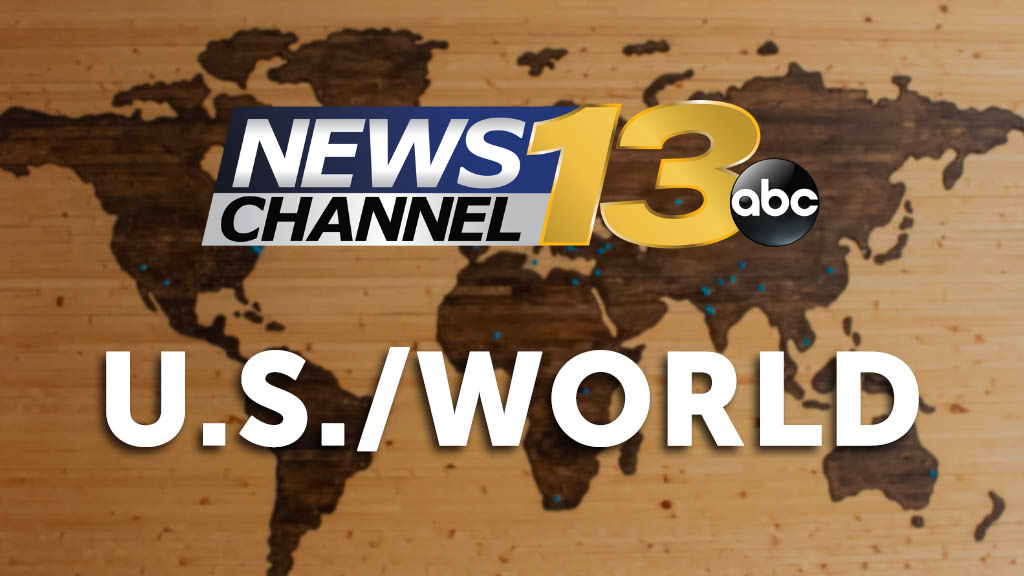Some worshippers switching congregations amid United Methodist split over LGBTQ issues

By PETER SMITH and HOLLY MEYER
Associated Press
The Rev. Bill Farmer reached the point where he couldn’t stay in the United Methodist Church anymore — but the congregation he attended was staying.
Michael Hahn always wanted to stay in the UMC — but his congregation was leaving it.
Each has found new church homes, and they’re not alone.
Thousands of United Methodist congregations have been voting on whether to stay or quit one of the nation’s largest denominations amid intractable debates over theology and the role of LGBTQ people. There are sharp differences over recognizing same-sex marriage and ordaining LGBTQ clergy.
But the dividing line isn’t just running between congregations. It’s running right through the pews of individual churches, separating people who had long worshipped together.
Those who come up on the short end of a disaffiliation vote face the dilemma of whether stay or go.
The splintering — often grievous and tense — has spurred new initiatives to provide havens for the unmoored. Some United Methodist regional conferences have begun designating “Lighthouse” congregations — ones that actively welcome people who wanted to stay United Methodist but whose former churches voted to leave. Other conferences use different names, such as “Beacon” or “Oasis,” but the idea is the same.
“The pain is real, and there is a lot of grief and a lot of heartache over the split in the United Methodist Church,” said the Rev. Lynda Ferguson, the great-grandchild of a circuit-riding Methodist pastor.
Her North Carolina church, First United Methodist Asheboro, became a Lighthouse congregation. That assures newcomers that it’s committed to staying United Methodist, so they won’t have to worry about another disaffiliation vote. More than 400 congregations have disaffiliated in North Carolina.
Ferguson said she can personally relate to those from departing congregations. Her childhood church — the one that shaped her faith and where at age 12 she felt the call to ministry — also voted to leave.
“Part of the Lighthouse mission is to let people know the United Methodist Church is still here and still welcoming,” said the Rev. Ed McKinney, pastor of Stokesdale United Methodist Church in Stokesdale, North Carolina, which also became a Lighthouse congregation.
Michael Hahn and his family are among a group of newcomers who have begun participating in Stokesdale after their previous congregations left the denomination.
Hahn, whose family has been Methodist for generations, said he couldn’t imagine leaving the denomination, which he values for blending faith and rationality: “It’s a place where I don’t have to check my logic and reason at the door and blindly accept things.”
Hahn said he, his wife and daughters have found “a very warm and welcoming environment” in the Stokesdale congregation, with people saying, “We’re glad to have you here, we want to walk through this period with you.”
Many of the departing churches are joining the conservative Global Methodist Church, created last year. Others are going independent or joining different denominations.
While the Global Methodist Church doesn’t have a program like the Lighthouse initiative, it has begun launching or adopting congregations that can become homes for those who want to leave the United Methodist Church but whose congregations are staying.
That was the case with the founders of Grace Methodist Church. They launched the church in January in Homosassa, Florida, after their previous congregation voted to stay in the UMC. The new church immediately affiliated with the Global Methodist Church.
Grace Methodist has been renting a former lodge hall for its services and has already started Bible studies and community outreaches, while also working to attract attendees from their neighborhood.
“We’re not there just to go to church on Sunday for an hour; we’re there to help the community,” said member Neil Kline. The enthusiasm of participants is evident, he said: “They can’t wait to get to church, and they don’t want to leave.”
Farmer came out of retirement to serve as the church’s pastor.
The group’s previous congregation “was a good church,” Farmer said, and he wished it well. But “my struggle was with the United Methodist structure, what’s going on in the United States, particularly.”
The ongoing schism has been long in the making.
The United Methodist Church — with about 6.5 million members in the United States and at least that many abroad — has long debated its bans on same-sex marriages and the ordination of openly LGBTQ clergy.
The denomination has repeatedly upheld the bans, largely through the voting strength of the growing, more conservative churches abroad. But conservatives chose to form a new denomination amid growing defiance of the bans in U.S. churches.
More than 3,500 U.S. congregations have received their local conferences’ permission to disaffiliate from the UMC, according to United Methodist News Service. With conference season underway, disaffiliations are closing in on 4,000 and could rise even more by the end of the year, said the Rev. Jay Therrell, president of the Wesleyan Covenant Association, a conservative group advocating for departing congregations.
That’s a fraction of the United Methodists’ 30,000 U.S. churches, though several of the departing congregations are among the largest in their states.
Therrell said he had no problem with the Lighthouse concept but renewed his call to allow churches to disaffiliate on reasonable terms.
“I want everyone to be in the theological home that is the best fit,” Therrell said. “Certainly, the United Methodist Church is welcome to try to create churches to do that. I hope they would respect traditionalists and allow us to get to the place where we need to be.”
In the Arkansas Conference, more than 100 churches — out of roughly 600 total — have received permission to disaffiliate. That leaves parts of the state with few or no remaining United Methodist congregations, said the Rev. Michael Roberts, director of the conference’s new Restart Initiative, which is hoping to enlist congregations to be Beacon churches. Such churches would invite self-described “exiles, refugees, nomads” to worship services, help them start home groups or develop other ways to keep them connected.
“We’re just really simply inviting churches to consider how they can provide this kind of hospitality,” Roberts said. “I love the word ‘hospitality’ because the word ‘hospital’ comes from that word. It is about providing healing.”
In the Western Pennsylvania Conference, 17 congregations officially became Lighthouse congregations as of May 1.
About a third of the estimated 800 churches in the Western Pennsylvania Conference — a sprawling 23-county region — are seeking to have their disaffiliations approved at the conference’s June annual meeting, according to Bishop Cynthia Moore-Koikoi.
“There have been very few votes where it was unanimous,” she said. For those on the short end of those votes — sometimes described as pilgrims — the Lighthouse congregations offer places where they can join or just find temporary harbor until they figure out next steps.
But Lighthouse churches aren’t places to settle into old routines, she said.
“This has been an opportunity to really think about folks who are unchurched, and how this nucleus of people looking for a church home might help us discern needs in the community and create faith communities” to reach people in new ways.
Added B.T. Gilligan, senior pastor at Nixon United Methodist Church, a Lighthouse congregation in Butler, Pennsylvania: “I really hope this extends and goes far beyond the disaffiliation, but allows for people who have been hurt by churches for all different kinds of reasons.”
___
Associated Press religion coverage receives support through the AP’s collaboration with The Conversation US, with funding from Lilly Endowment Inc. The AP is solely responsible for this content.



